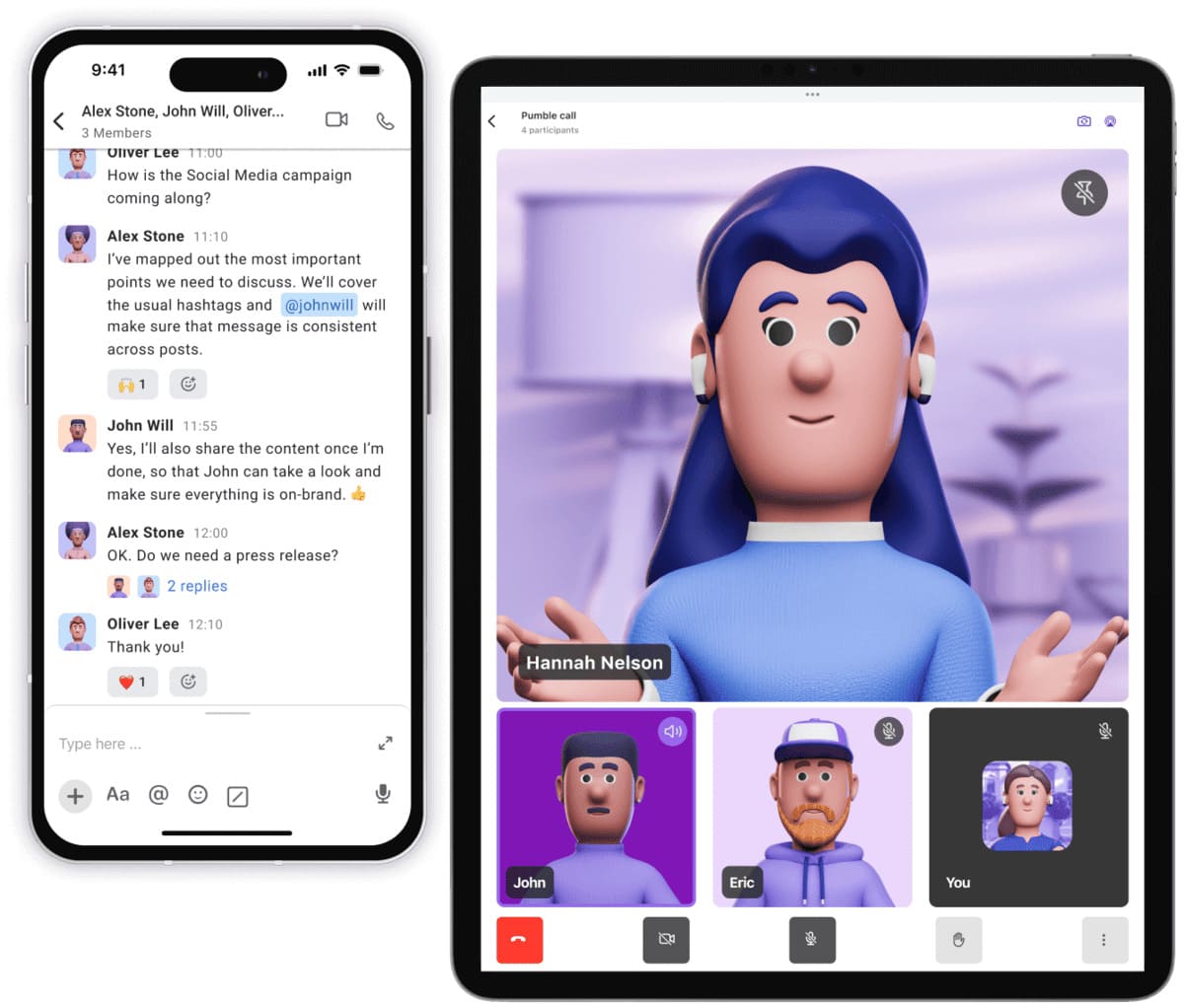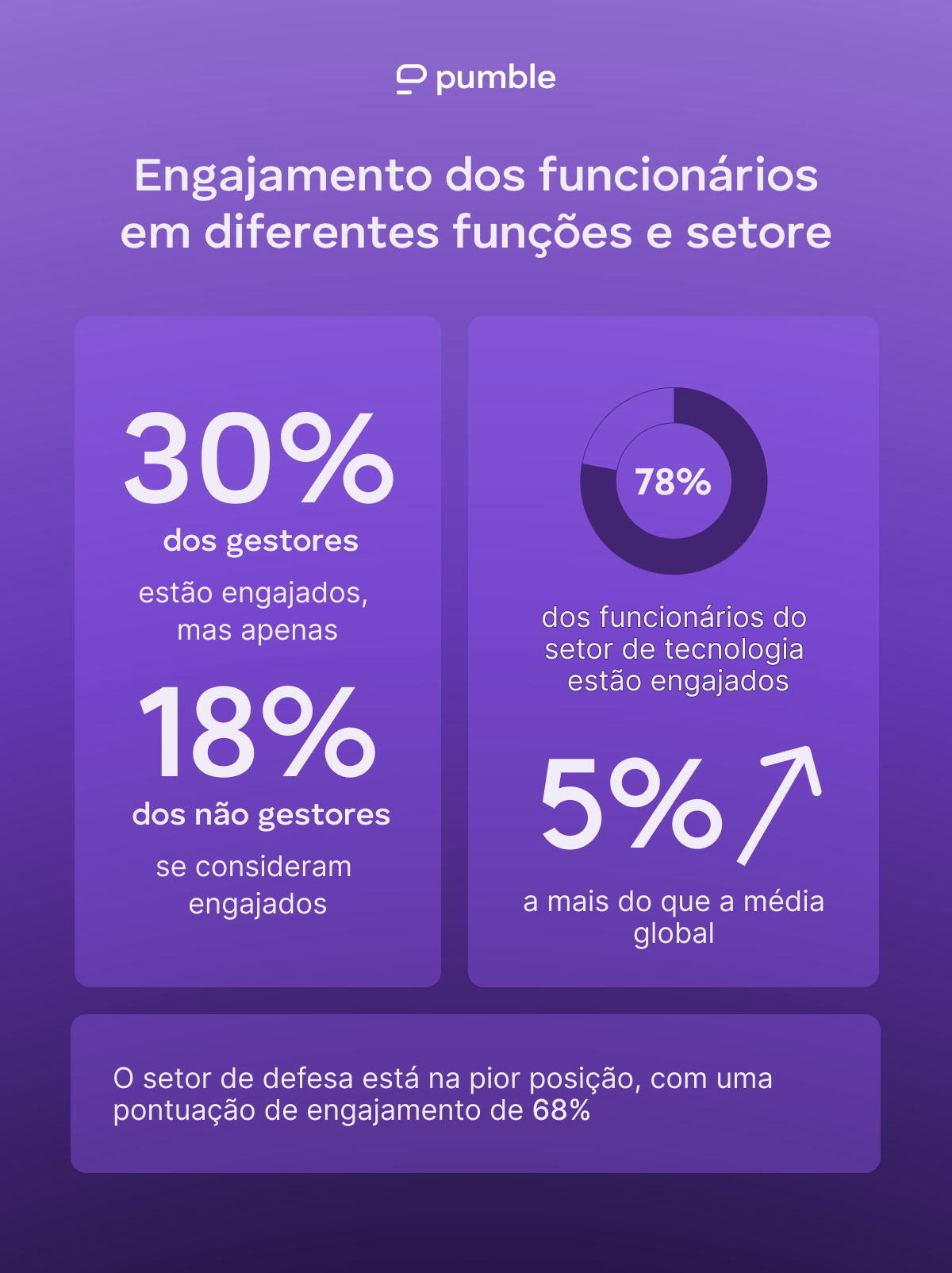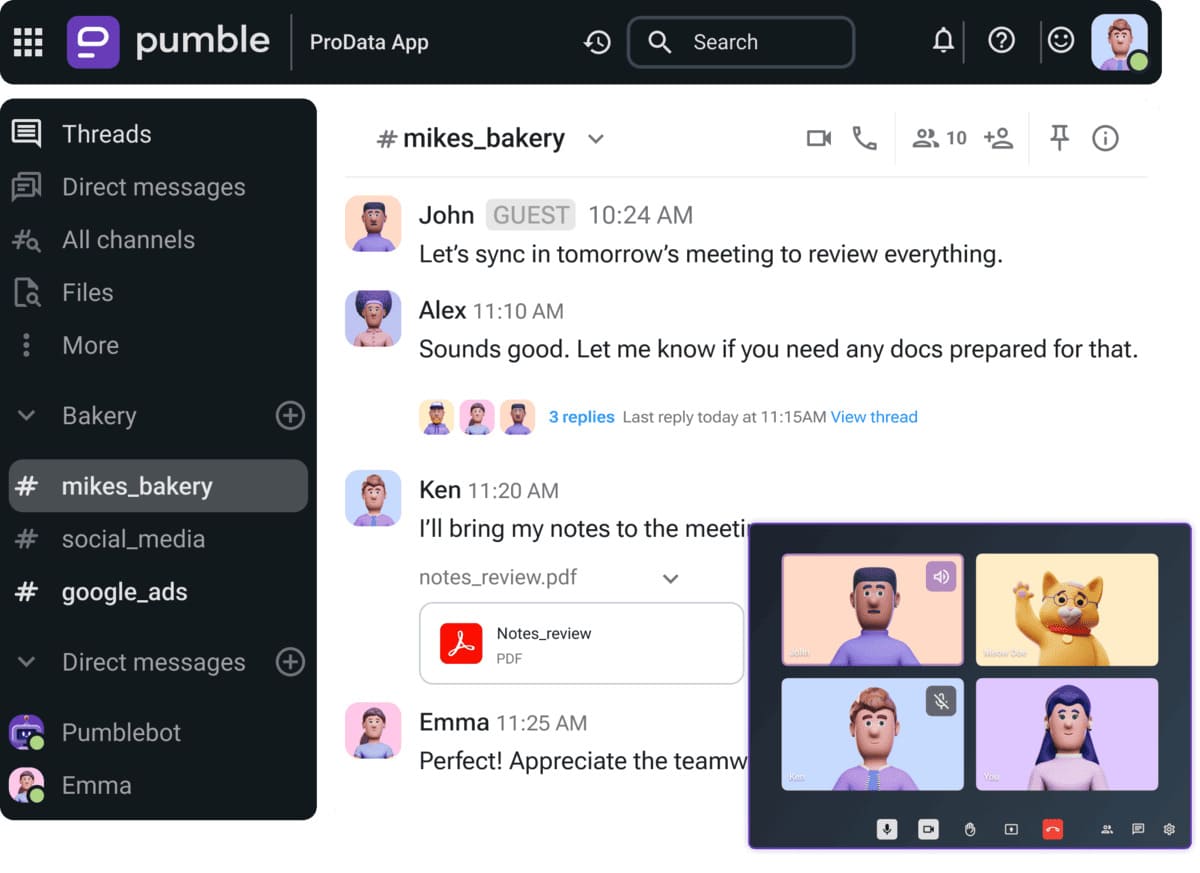Como passamos cerca de um terço de nossas vidas no trabalho, seria bom sentir satisfação e engajamento durante esse período, certo?
Infelizmente, as estatísticas de engajamento dos funcionários não são tão animadoras. Nos EUA, o engajamento anual caiu para 31%, enquanto globalmente esse número é de apenas 21%.
Mas será que o quadro geral é tão sombrio quanto esses números sugerem?
Trazemos para você os dados mais interessantes sobre o engajamento dos funcionários, incluindo estatísticas sobre:
- Tendências emergentes de engajamento dos funcionários
- O custo dos funcionários ativamente desengajados
- Fatores que afetam positivamente e negativamente o engajamento no trabalho
Vamos começar!

- Perdas globais devido ao baixo engajamento dos funcionários chegam a US$89 trilhões, com os níveis anuais de engajamento caindo para 31% e ainda mais para 21% globalmente.
- Funcionários desengajados são mais propensos a sentir preocupação, com 54% se sentindo assim, em comparação com apenas 34% dos funcionários engajados.
- Engajamento e confiança têm resultados positivos. 88% dos funcionários engajados gostam do seu trabalho e 50% prosperam em suas vidas pessoais e profissionais. Além disso, funcionários engajados têm cinco vezes mais probabilidade de se sentirem respeitados no trabalho do que seus colegas desengajados.
- 80% dos trabalhadores que recebem feedback semanal de seus gerentes se sentem engajados.
- Apenas 30% dos gestores são engajados, enquanto 18% dos funcionários não gestores se consideram engajados.
- No setor de Tecnologia, 78% dos funcionários são engajados — 5% a mais do que a média global. O setor de defesa tem o menor índice, com 68%.
O que é engajamento dos funcionários?
Engajamento dos funcionários é um conceito que descreve o entusiasmo e o comprometimento que os trabalhadores sentem em relação à sua organização. O termo também se refere às emoções dos funcionários em relação à sua empresa, o que os ajuda a alinhar suas contribuições com os objetivos organizacionais.
Em geral, funcionários engajados acham mais fácil abraçar a cultura da empresa e entregar resultados positivos.
Quando está no auge, o envolvimento no local de trabalho traz várias vantagens, incluindo:
- Aumento da produtividade: você pode trabalhar com mais eficiência e manter o foco quando está engajado.
- Mais inovação: se você se sente conectado a sua equipe e a visão organizacional, você fica mais compelido a trocar soluções e ideias.
- Maiores lucros: O envolvimento é a força motriz por trás da satisfação e da produtividade do cliente – ambos gerando receita.
- Maior retenção de funcionários: em equipes engajadas, os membros têm menos probabilidade de sair, mantendo sob controle os custos de treinamento e contratação.
É claro que as coisas nem sempre são tão simples. Sendo assim, reconhecemos três níveis de envolvimento:
- Engajados — funcionários que estão emocionalmente comprometidos com seu trabalho
- Não engajados — funcionários que não estão tão entusiasmados com seu trabalho, mas fazem o que lhes é exigido
- Ativamente desengajados – funcionários insatisfeitos que espalham sua negatividade para outras pessoas
Então, o que acontece quando os colaboradores estão desengajados ou, pior ainda, ativamente desengajados? Quais são as consequências para a empresa?
Aqui estão os dados mais recentes sobre engajamento dos funcionários.
Após anos de crescimento, o envolvimento dos funcionários está estagnado
De acordo com os dados do local de trabalho da Gallup, após anos de melhora, o engajamento dos funcionários permanece no mesmo nível desde 2023.
Em 2024, as tendências do engajamento dos funcionários nos EUA mostraram que:
- 31% dos funcionários estavam ativamente engajados
- 17% dos funcionários estavam ativamente desengajados
O relatório State of Global Workforce para 2024 observa que muitos funcionários enfrentam obstáculos em suas vidas pessoais e profissionais, o que prejudica sua produtividade no trabalho.
Ainda assim, os dados de engajamento dos funcionários da CultureAmp são mais otimistas. Em 2023 e 2024, os níveis de engajamento ficaram em 71%, após atingirem o pico em 2020 e 2021 de 74%.
Por que a ligeira queda? Os últimos anos trouxeram muitas incertezas, desde as mudanças econômicas e a implementação da IA até aos conflitos internacionais e o aumento do trabalho flexível.
Esses fatores afetaram negativamente:
- O resultado final
- Satisfação no trabalho
- Bem-estar dos colaboradores
O custo de uma força de trabalho descomprometida é alto
O baixo engajamento dos funcionários tem consequências de longo alcance. A Gallup estima em seu relatório State of the Global Workforce que isso drena anualmente US$89 trilhões da economia global — quase um décimo do PIB mundial.
Além do mais, o Relatório de engajamento de 2024 da People Element estima que a taxa de rotatividade para equipes não engajadas é 43% maior do que para equipes engajadas.
Esses dados parecem desanimadores, mas não significa que as organizações devam gastar alguns centavos para compensar os contratempos. Pelo contrário, é mais uma razão para investir em estratégias de envolvimento dos funcionários a longo prazo.
Por exemplo, a Harvard Business Review sugere que as empresas podem impulsionar o engajamento ao:
- Permitir que os funcionários explorem diferentes tarefas e descubram funções que se alinham aos seus interesses.
- Aumentar a autonomia e capacitar os membros da equipe para tomar decisões de forma independente.
- Estabelecer programas de mentoria para aumentar as habilidades e a confiança.
Etapas como essas podem impactar positivamente o desempenho organizacional — e o Google é um exemplo disso. A HBR destaca que o programa de mentoria da empresa mostrou que os novos funcionários que trabalhavam com um mentor se adaptavam 25% mais rápido do que seus colegas que não participaram do programa.
As organizações podem reduzir perdas financeiras e melhorar o bem-estar dos funcionários adotando estratégias semelhantes.

Funcionários descomprometidos experimentam níveis mais elevados de emoções negativas
O relatório da Gallup analisou a experiência dos funcionários revelou outro fato interessante: o trabalho afeta nossas emoções diárias e experiências de vida.
Funcionários ativamente desengajados passam por altos níveis de preocupação, estresse e outras emoções negativas, incluindo:
- Tristeza
- Solidão
- Raiva
Além disso, seus sentimentos negativos ultrapassam os dos desempregados, apontando para os perigos do baixo engajamento.
É assim que eles se comparam
| Emoções negativas | Colaboradores ativamente envolvidos (%) | Colaboradores não engajados (%) | Funcionários ativamente desengajados (%) | Unemployed peers (%) |
|---|---|---|---|---|
| Estresse | 34 | 40 | 54 | 42 |
| Preocupação | 30 | 36 | 52 | 52 |
| Raiva | 17 | 19 | 32 | 28 |
| Solidão | 17 | 19 | 31 | 32 |
| Tristeza | 17 | 21 | 34 | 38 |
Embora o estresse afete 54% dos funcionários desengajados, o número cai para 34% entre os engajados.
Seguindo essa tendência, trabalhadores engajados também vivenciam níveis mais altos de emoções positivas. Na verdade, 88% dos funcionários engajados relatam encontrar alegria em seu trabalho, com 50% afirmando que prosperam em suas vidas pessoais e profissionais.
Por outro lado, funcionários ativamente desengajados relatam menos experiências positivas do que pessoas desempregadas.
Os dados falam por si
| Funcionários engajados (%) | Funcionários ativamente desengajadoss (%) | Funcionários não engajados (%) | Unemployed individuals (%) | |
|---|---|---|---|---|
| Alegria | 88 | 80 | 57 | 67 |
| Prosperidade | 50 | 32 | 17 | 23 |
As estatísticas da CultureAmp sobre o envolvimento dos funcionários estão alinhadas com essas descobertas, observando uma queda no senso de orgulho e motivação dos trabalhadores. Em 2020, 88% dos entrevistados relataram sentir orgulho pelo seu trabalho, enquanto 84% o fizeram em 2024.
Da mesma forma, a motivação disparou entre 2020 e 2022 para 71% e voltou para 68% em 2024. Essas flutuações coincidem com os mandatos de retorno ao escritório e podem ser uma resposta às promessas não cumpridas de um trabalho mais flexível.
🎓 Dica profissional do Pumble
Você está nervoso com alguns dos números que mencionamos? Não há razão para se preocupar! O blog abaixo descreve várias estratégias de engajamento de funcionários que você pode experimentar, incluindo um modelo de pesquisa útil para medir o engajamento:
Os gestores são mais propensos a passar por experiências negativas do que outros funcionários.
Embora 30% dos gerentes estejam engajados, apenas 18% dos funcionários não gerenciais se descreveriam dessa forma. Esses dados são importantes, pois gerentes engajados têm maior probabilidade de liderar equipes altamente engajadas.
No geral, embora 30% dos gestores estejam engajados, apenas 18% dos não gestores se descreveriam dessa forma. Esses dados são importantes, pois gerentes engajados têm maior probabilidade de liderar equipes altamente engajadas.
No entanto, os gerentes correm um risco maior de experimentar emoções negativas do que outros funcionários. Embora experimentem níveis semelhantes de estresse, raiva e solidão, a diferença aumenta quando se trata de tristeza e preocupação.
| Percentual de experiência diária | ||
|---|---|---|
| Emoção | Gestores | Outros funcionários |
| Estresse | 41 | 40 |
| Preocupação | 39 | 36 |
| Tristeza | 24 | 21 |
| Solidão | 21 | 20 |
| Raiva | 21 | 19 |
Então, qual é a consequência desse estresse e preocupação? Por um lado, eles são mais propensos a procurar um novo emprego do que funcionários em cargos não gerenciais.
Estes dados mostram que as empresas precisam fazer mais para valorizar e apoiar seus gerentes – uma vez que estão na linha de frente para motivar e capacitar suas equipes.
Em organizações com melhores práticas, o apoio ao pessoal administrativo pode incluir:
- Usando enquetes em aplicativos de comunicação de equipe para determinar quais recursos são mais necessário
- Reconhecimento constante das contribuições dos gerentes
- Investimento contínuo em treinamento e oportunidades de desenvolvimento profissional
- Processos de RH mais simples e eficientes
- Pesquisas anuais ou semestrais de engajamento centradas em temas específicos (ou seja, bem-estar dos funcionários, dinâmica de equipe, etc.).

Mantenha-se em sintonia com sua equipe no Pumble
Quando tais medidas são implementadas, as recompensas logo surgem. Organizações com melhores práticas se destacam com ¾ dos gerentes e 7 em cada 10 não-gerentes ativamente engajados.
Quando os gestores estão engajados, suas equipes ficam muito
A Meta-Analysis do 12º trimestre destacou que apenas 3 em cada 10 gestores se sentem engajados no trabalho globalmente — uma realidade preocupante, já que o mesmo relatório descobriu que gestores engajados também lideram equipes engajadas.
Expandindo sua pesquisa de engajamento dos funcionários para o nível nacional, a Gallup produziu dados mais específicos.
Em países onde os gestores reportam um nível mais elevado de engajamento, os funcionários não gestores geralmente seguem o exemplo.
Aqui está a comparação.
| % de engajamento de gestores x não gestores | ||
|---|---|---|
| País | Gestores | Não gestores |
| Lesoto | 49 | 44 |
| Costa Rica | 42 | 36 |
| Estados Unidos da América | 37 | 32 |
| Argentina | 30 | 30 |
| Islândia | 27 | 23 |
| Canadá | 22 | 20 |
| Alemanha | 17 | 12 |
| Reino Unido | 11 | 10 |
| França | 8 | 8 |
Os números acima mostram que a divisão entre gestores e não gestores não é tão grande em locais onde os gestores estão mais engajados.
E, mesmo em países com baixo engajamento dos funcionários, os gestores ainda obtêm pontuações mais altas do que os outros funcionários.
O feedback dos gestores faz a diferença
O relatório da Gallup também constatou que 80% dos trabalhadores que recebem feedback construtivo dos gestores pelo menos uma vez por semana estão engajados.
Isso significa que, em vez de acelerar suas tarefas, é melhor reservar um tempo para conversar com os funcionários sobre seu desempenho.

As descobertas da People Element são semelhantes, mostrando que 1 em cada 3 funcionários se sente subestimado – algo que uma reunião anual de feedback dificilmente resolverá.
No entanto, o feedback nem sempre é bem-vindo, pois apenas 27% dos funcionários gostariam de receber feedback semanalmente da gestão.
O feedback semanal nos deixa mais engajados. Então, por que hesitamos em adotar essa prática?
A resposta é simples: os funcionários não querem perder tempo se o feedback não for eficiente.
Quando fornecido de forma adequada, o feedback crítico:
- Elimina mal-entendidos
- Descreve etapas para crescimento e desenvolvimento futuro
Assim, para garantir que isso tenha um efeito positivo no desempenho e no engajamento dos funcionários, os gestores devem:
- Regularmente organiza reuniões individuais e reuniões em grupo com os membros de sua equipe
- Evitar linguagem agressiva
- Promover um ambiente psicologicamente seguro para que os funcionários possam falar abertamente
- Repetir e esclarecer as metas de longo prazo

🎓 Dica profissional do Pumble
Tirar o máximo proveito do feedback é um processo contínuo. Aqui estão alguns recursos que podem ajudar sua equipe a aproveitar os benefícios do feedback construtivo:
Faça com que cada conversa conte com o Pumble
Planos de carreira pouco claros reduzem o envolvimento dos funcionários
A People Element destaca a oportunidade de crescimento como um componente principal do engajamento dos funcionários: 83% dos funcionários disseram que o desenvolvimento profissional é o que eles mais valorizam em um emprego.
Números adicionais apoiam este sentimento, como:
- 65% dos funcionários sentem que têm oportunidades suficientes de desenvolvimento profissional
- 1 em cada 3 funcionários acredita que não tem ninguém para apoiar o desenvolvimento do seu local de trabalho
À medida que as circunstâncias econômicas e tecnológicas continuam a evoluir, as organizações terão de criar iniciativas para requalificar a sua força de trabalho e remodelar funções.
Isto pode implicar priorizar a mobilidade interna de talentos, o que incentiva o avanço na carreira dentro da organização. Os funcionários podem até querer fazer a transição de seu cargo atual para um novo, onde teriam que começar do zero. Para que isso tenha sucesso, é necessário cultivar uma cultura de aprendizado contínuo.
Definir metas claras é uma questão importante de engajamento
A análise da Deloitte das estratégias de engajamento dos funcionários identificou o identificou o estabelecimento de metas como um obstáculo para a maioria das organizações. Ou seja, 51% das empresas tentam desenvolver metas alinhadas, enquanto apenas 6% tentam revisitá-las posteriormente.
Quando os funcionários percebem que as metas são compartilhadas abertamente e bem articuladas, eles se sentem mais à vontade entre os membros da equipe, o que estimula a criatividade e a produtividade.
Além disso, as equipes que estão alinhadas com os objetivos da empresa apresentam um maior nível de satisfação no trabalho. Naturalmente, estes benefícios só ocorrem se os objetivos forem frequentemente revisitados e redefinidos.
🎓 Dica profissional do Pumble
Alinhar sua equipe com os objetivos da empresa exige algum esforço. Este guia de três etapas pode ajudá-lo a começar:
Alcance seus objetivos de colaboração com o Pumble
O setor de tecnologia lidera o ataque com funcionários engajados
O Relatório Global do Local de Trabalho de 2024 da WorkL encontrou diferenças no nível de engajamento entre os setores.
A boa notícia é que, em 2024, a maioria das indústrias registrou um aumento no engajamento em comparação com 2023, atingindo ou mesmo excedendo o valor de referência de 70% do relatório.
O setor de tecnologia garantiu a primeira posição com 78% – 5% acima da média global. Além disso, este setor apresenta um baixo índice de risco de bem-estar de apenas 18%, o que poderia resultar de políticas mais favoráveis e de uma cultura positiva no local de trabalho.
77% dos funcionários que trabalham para empresas de tecnologia relatam um grande sentimento de orgulho pelo seu trabalho, o que significa que consideram seu trabalho gratificante e valioso.
Os setores de Varejo e Defesa têm os funcionários mais descomprometidos
Algumas indústrias, como os setores de defesa e do varejo, não conseguiram atingir a referência de engajamento de 70%.
O setor de defesa está em último lugar, com 68% de engajamento. Dado o quão turbulentos têm sido os últimos anos – com a escalada de vários conflitos globais – isto não é surpreendente.
A situação no Retalho varejo não é muito melhor – a sua pontuação de gajamento caiu para 69%. O baixo engajamento dos funcionários neste setor é galopante na Nova Zelândia, no Reino Unido e no Canadá.
Os empregados estão particularmente insatisfeitos com:
- Falta de pessoal
- Gestão desrespeitosa
- Remuneração insuficiente
- Horário de trabalho

As disparidades de género e de deficiência persistem
Os dados da WorkL identificaram ainda uma ligeira diferença entre homens e mulheres. O maior desequilíbrio está nos EUA, onde a pontuação de engajamento é de 73% para mulheres e 77% para homens.
Além disso, as mulheres têm maior probabilidade de deixar seus empregos, com uma pontuação de 25% no indicador de risco de saída. Para os homens, a pontuação cai para 20%.
Mas a disparidade em termos de deficiência é mais pronunciada no Reino Unido. Trabalhadores com deficiência têm uma pontuação de engajamento de apenas 68% — a classificação mais baixa do mundo. Eles relatam que um dos principais contribuintes para o seu descontentamento é a falta de conscientização sobre acessibilidade no ambiente de trabalho.
Além disso, a sua insatisfação aumenta quando associamos o envolvimento dos colaboradores à satisfação salarial. Quando focamos na remuneração, a taxa de engajamento das pessoas com deficiência cai para 63%, enquanto é um pouco maior para outros trabalhadores, de 66%.
Como o salário ainda tem um impacto notável no engajamento dos funcionários, levou ao aumento da “disparidade entre engajamento e satisfação salarial”.
A remuneração continua sendo um ponto chave de melhoria
A pesquisa de envolvimento dos funcionários da WorkL revelou que, globalmente, os funcionários gostariam de trabalhar menos horas com melhor remuneração.
O número de funcionários que buscam trabalho flexível — seja híbrido ou totalmente remoto — dobrou entre 2019 e 2024. E 24% dos funcionários que desejam mais flexibilidade também mencionam querer um salário mais alto.
O que acontece quando os funcionários sentem que são remunerados de maneira justa? Seu engajamento melhora significativamente.
Vejamos o gráfico.
| País | Engajamento (%) dos funcionários que acreditam que são remunerados de forma justa |
|---|---|
| Filipinas | 79 |
| Emirados Árabes | 74 |
| Estados Unidos da América | 71 |
| Global | 70 |
| Canadá | 69 |
| Austrália | 69 |
| Reino Unido | 68 |
Um salário maior por si só não garante funcionários mais engajados. O que as equipes realmente precisam é de suporte contínuo que faça valer a pena seu tempo de trabalho.
A confiança na liderança continua a impulsionar o envolvimento dos funcionários
O Engagement Report de 2024 também observa que a confiança e confiança na liderança estão diminuindo, com apenas:
- 23% dos funcionários dizendo que confiam firmemente na sua liderança
- 2 em cada 3 funcionários acreditando que a liderança comunica uma visão clara para o futuro
- 63% dos funcionários sentem que recebem comunicação suficiente da liderança
A CultureAmp relata que nas organizações onde os funcionários confiam nos seus líderes, o engajamento segue uma trajetória ascendente
No entanto, apenas 37% das empresas pediram feedback à sua força de trabalho sobre a confiança na liderança em 2024, em comparação com 54% em 2019. Este declínio pode indicar uma tendência negativa, em que as empresas ignoram esta questão deliberadamente para evitar respostas indesejadas ou podem não estar dispostas a alocar recursos para resolver o problema.
De acordo com a CultureAmp, estes são os impulsionadores globais mais proeminentes do engajamento dos funcionários, particularmente no que diz respeito à confiança na liderança.
| Motivadores do engajamento dos funcionários — Confiança na liderança |
|---|
| “Tenho confiança nos nossos líderes.” |
| “A empresa oferece uma excelente cultura de local de trabalho para que eu possa crescer e me desenvolver ainda mais.” |
| “A liderança compartilha uma visão que me inspira e motiva.” |
| “A liderança tem mostrado que as pessoas são fundamentais para o sucesso organizacional.” |
Os motivadores acima sugerem que, além de um ambiente positivo e uma remuneração justa, os funcionários esperam orientação e clareza para terem sucesso em suas funções.
Uma abordagem comprovada é promover a comunicação transparente e a escuta ativa. Isso cria oportunidades para que os líderes construam conexões genuínas e honestas com os funcionários.
Conecte-se com sua equipe no Pumble
O respeito no trabalho atinge um novo nível
Os dados da Gallup sobre respeito no trabalho mostram que apenas 4 em cada 10 trabalhadores nos EUA sentem que são tratados com respeito no trabalho. E apenas 37% dos funcionários concordaram que foram tratados com respeito no trabalho em 2024, o número mais baixo desde 2022.
Por que isso importa? Porque o engajamento e o respeito dos funcionários andam de mãos dadas.
Funcionários engajados se sentem capacitados e respeitados porque suas equipes:
- Apreciam suas ideias e contribuições
- Celebra seu sucesso
- Se preocupam com o desenvolvimento profissional de todos
Em tal ambiente, não é de admirar que os funcionários sintam que são tratados de forma justa e respeitosa. Na verdade, funcionários engajados têm 5 vezes mais probabilidade de relatar que se sentem respeitados no local de trabalho do que seus colegas não engajados.
Os mercados de trabalho locais afetam o envolvimento dos funcionários
A situação do mercado de trabalho local é outro fator que afeta o seu envolvimento no trabalho. Ou seja, quando há menos oportunidades de emprego, os níveis de desengajamento aumentam. Alternativamente, quando o mercado de trabalho melhora, o engajamento dos funcionários também melhora. Isso faz sentido, pois é natural sentir-se desmotivado quando não consegue encontrar um emprego melhor.
Vejamos alguns dados específicos por país.
| País | “É uma boa altura para procurar um novo emprego” (%) | Funcionários ativamente desengajados (%) |
|---|---|---|
| Dinamarca | 80 | 7 |
| Islândia | 79 | 7 |
| Austrália | 74 | 12 |
| Alemanha | 67 | 17 |
| Estados Unidos da América | 65 | 16 |
| França | 44 | 18 |
| Japão | 40 | 24 |
| Itália | 32 | 25 |
| Tunisia | 11 | 42 |
Observe que a aceitação do engajamento dos funcionários não ocorre automaticamente quando as condições econômicas melhoram. Para que isso aconteça, outras mudanças são necessárias, como maior apoio da liderança e gestão.
Aja agora e crie uma equipe altamente engajada com o Pumble
Dadas as estatísticas apresentadas, é provável que apenas cerca de um quarto da sua força de trabalho esteja ativamente engajada. Sem uma ação imediata, você corre o risco de perder tanto a receita quanto os melhores talentos.
Comece a enfrentar os desafios assim que eles surgirem.
Aplicativos como o Pumble simplificam a comunicação no local de trabalho, com mensagens diretas e conversas encadeadas permitindo que todos tenham discussões transparentes e resolvam preocupações.
Mantenha o diálogo contínuo com as ferramentas de videoconferência e conecte-se com os membros da equipe de forma humana e empática.

Aproveite ao máximo as ferramentas de comunicação e colaboração do Pumble e garanta que o engajamento dos funcionários nunca se torne um obstáculo.
Mantenha sua equipe conectada, não importa onde eles trabalhem.
Como avaliamos esta publicação: Nossos escritores e editores monitoram as postagens e as atualizam quando novas informações ficam disponíveis, para mantê-las atualizadas e relevantes.
